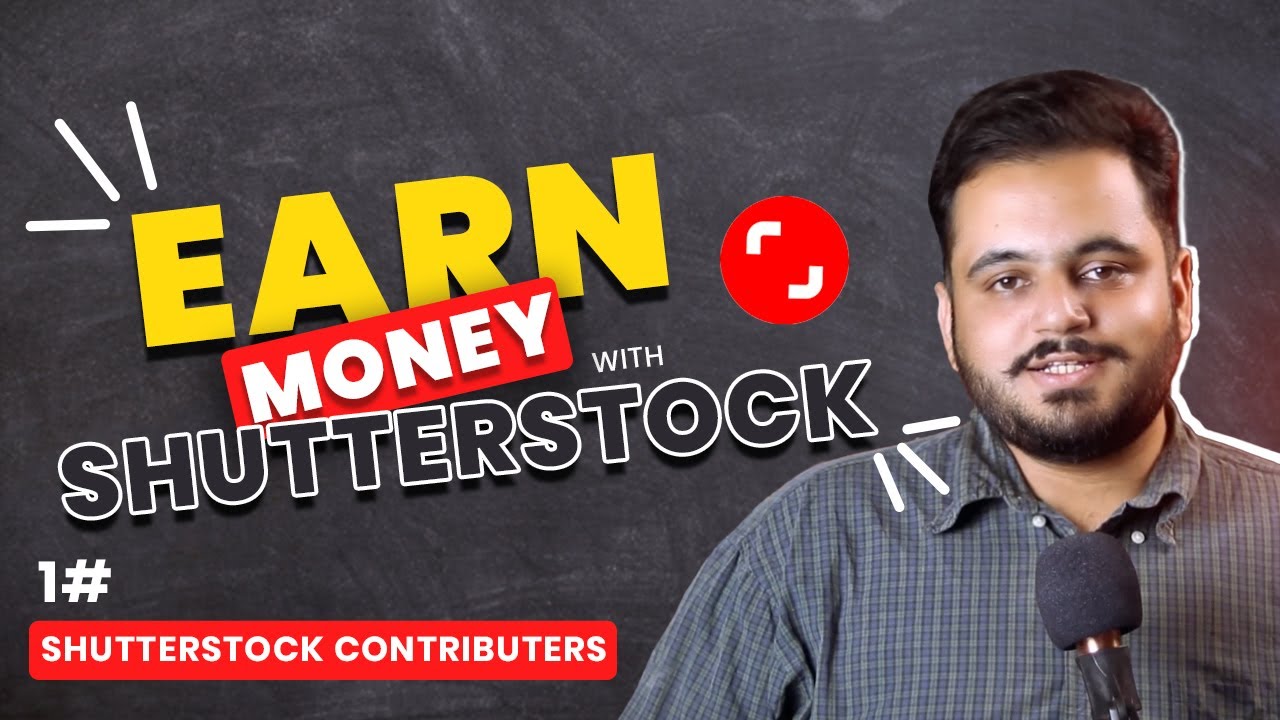Welcome! If you’re curious about how photographers and artists earn money from their images online, you’ve come to the right place. Shutterstock is one of the biggest platforms out there, offering a vast library of images, videos, and music that businesses and creators worldwide use. But have you ever wondered how the money flows from someone downloading an image to the creator getting paid? That’s where Shutterstock’s licensing program comes into play. It’s all about making sure contributors are rewarded fairly for their work while providing users with the rights they need to use images legally and confidently.
How Shutterstock Contributors Are Paid for Their Images

So, how exactly does Shutterstock pay its contributors? Well, it’s a mix of factors, but the core idea is simple: the more popular your images are, the more you earn. When you upload your photos to Shutterstock, they become available for licensing by customers around the world. Each time someone downloads an image, the contributor earns a royalty based on a predetermined rate.
Here’s a quick rundown of the main points:
- Royalty Rates: Shutterstock uses a tiered system based on your lifetime earnings and the type of license purchased. Typically, contributors earn between 15% and 40% of the price charged for the image. The more you earn, the higher your percentage becomes.
- Earnings per Download: The actual payout per download varies depending on the license type (Standard or Enhanced) and your contributor level. For example:
| Contributor Level | Standard License Earnings | Enhanced License Earnings |
|---|---|---|
| New Contributor | around 15% | around 30% |
| Trusted Contributor | up to 20% | up to 40% |
But it’s not just about the percentage. Your actual earnings also depend on the price of the image, which Shutterstock sets based on the size and license type. For example, a standard license for a small image might be cheaper, resulting in a smaller royalty, while an extended license for a high-resolution image will generate a higher payout.
Another factor is your contributor rank, which improves as you submit more images and earn more. Higher ranks unlock better royalty rates and extra perks, encouraging quality and consistency in your uploads. Plus, Shutterstock offers a flexible payout schedule—contributors get paid once a month via PayPal or bank transfer, once they reach the minimum threshold (usually $35).
All in all, Shutterstock’s payment system rewards active, high-quality contributors with increasing earning potential. It’s a platform that values dedication and good content, making it a popular choice for photographers and artists looking to monetize their work online.
Factors Influencing Shutterstock Payment Rates
When it comes to earning money from Shutterstock, understanding the factors that influence your payment rates is key. Think of it like navigating a marketplace — several elements can impact how much you get paid per download. Let’s break down the main factors that play a role:
Quality of Your Content
Shutterstock values high-quality images that are sharp, well-composed, and relevant. Contributors who consistently submit polished, professional-looking work tend to earn higher royalties. This means investing time in editing, retouching, and ensuring your images meet industry standards can pay off.
Image Popularity and Demand
Some types of images are more in demand than others. For example, lifestyle photos, business concepts, and technology images usually fetch higher rates because they’re widely used by marketers and designers. Keeping an eye on trending topics and creating relevant content can boost your earnings.
License Type
Shutterstock offers two main types of licenses: Standard and Enhanced. The Enhanced license provides customers with more usage rights—like printing, merchandise, or large-scale campaigns—and this means higher payouts for contributors. Uploading images suitable for these licenses can significantly increase your earnings.
Contributor Level and Performance
Your standing as a contributor matters. Shutterstock rewards consistent contributors who submit high-quality images with increased royalty rates over time. The platform tracks your sales volume and quality, so staying active and maintaining quality helps you climb the contributor levels and unlock better rates.
Pricing Structure and Subscription Models
Shutterstock operates on a subscription-based model, where customers buy packs of downloads. Your royalty rate can vary depending on the number of downloads you generate and the plan the customer chooses. Generally, more downloads mean higher total earnings, but individual payout rates might fluctuate depending on the specific licensing and subscription plan.
How to Maximize Your Earnings as a Shutterstock Contributor
If you’re serious about making the most out of your Shutterstock contributions, there are several strategies you can use to boost your income. Let’s go through some practical tips that can help you maximize your earning potential:
Create High-Quality, Versatile Content
- Invest in good equipment and editing tools to produce sharp, professional images.
- Capture a variety of subjects, styles, and themes to appeal to a broader audience.
- Stay updated with current trends and seasonal topics to keep your portfolio relevant.
Upload Consistently and Regularly
Frequency matters. The more high-quality images you upload, the higher your chances of sales. Set a routine, whether it’s weekly or bi-weekly, and stick to it. Consistent uploads also help keep your portfolio fresh and engaging for buyers.
Optimize Your Metadata
Keywords, titles, and descriptions are crucial. Use accurate, descriptive keywords that match what buyers are searching for. Avoid keyword stuffing, but be thorough. Well-optimized metadata makes your images more discoverable, increasing potential downloads and earnings.
Focus on Niche Markets
While broad content is good, specializing in niche areas—like healthcare, finance, or specific hobbies—can position you as an expert. Niche images often face less competition and can command higher licensing fees.
Participate in Promotions and Seasonal Opportunities
Shutterstock often runs promotions or features certain themes. Contributing images aligned with these events or seasons can lead to increased visibility and sales. Keep an eye on platform announcements and trending topics.
Engage with the Contributor Community
Join forums, social media groups, or webinars. Sharing tips and learning from others can inspire new ideas and strategies to boost your earnings. Plus, staying engaged keeps you motivated and informed about platform updates.
Monitor Your Performance and Analytics
Use Shutterstock’s dashboard to track which images perform best. Focus your efforts on creating similar content that has proven successful. Analyzing your sales data helps you refine your portfolio and target high-performing niches.
By combining quality content, strategic uploads, and active engagement, you can steadily increase your Shutterstock earnings and turn your photography passion into a rewarding side hustle or even a full-time gig. Happy shooting!
Understanding Payment Methods and Payout Schedule
One of the first things you’ll want to get clear on as a Shutterstock contributor is how you’re going to get paid and when. After all, understanding the payment methods and payout schedule is key to managing your expectations and planning your income stream.
Shutterstock offers several payment options to make things convenient for contributors worldwide. The most common methods include:
- PayPal: Fast and widely used, PayPal transfers are typically processed quickly once your earnings hit the payout threshold.
- Payoneer: Ideal if you prefer receiving funds directly to your bank account, especially if PayPal isn’t available in your country.
- Bank Transfer (Wire Transfer): Suitable for larger earnings, this option involves direct bank deposits, but may involve additional fees.
It’s important to note that your preferred payment method might depend on your country of residence and the options available there. Always double-check your account settings in your Shutterstock contributor dashboard to ensure your payout details are correct.
Now, about the payout schedule: Shutterstock has a minimum payout threshold, which varies depending on your payment method and country. For most contributors, the threshold is $35 USD. Once your earnings reach this amount, your payout is processed.
Shutterstock processes payments monthly, usually around the 15th of each month for earnings accumulated in the previous month. For example, earnings made in January will typically be paid out by mid-February. However, this timeline can vary slightly based on your payment method and any verification steps required.
To avoid delays, ensure your account details are verified and up to date. Also, be mindful of any taxes or deductions that might apply based on your country’s regulations. Keep track of your earnings through your dashboard, and plan your uploads accordingly to maximize your payouts.
Tips for Increasing Your Shutterstock Image Sales and Income
If you’re serious about boosting your earnings on Shutterstock, there are plenty of strategies you can adopt. The good news is, with a little effort and some smart tactics, you can increase your image sales and steadily grow your income.
Here are some practical tips to help you succeed:
- Focus on Trending Topics and Niches: Stay updated on current trends, seasonal events, and popular themes. For example, lifestyle images, business scenes, or technology-related visuals often perform well.
- Optimize Your Keywords and Titles: Use descriptive, relevant keywords that accurately reflect your images. Think about what buyers might search for and include synonyms and related terms.
- Create High-Quality, Unique Content: Invest time in producing sharp, well-composed, and original images. Unique visuals stand out and are more likely to be purchased.
- Upload Consistently: Regular uploads keep your portfolio fresh and increase the chances of your images appearing in search results. Set a schedule that works for you, whether it’s weekly or monthly.
- Engage with the Shutterstock Community: Participate in forums, read contributors’ tips, and learn from others’ successes. Networking can open doors to new ideas and insights.
- Promote Your Portfolio: Share your images on social media, personal websites, or blogs. While Shutterstock traffic is the primary source, external promotion can attract potential buyers.
Remember, increasing sales takes time. Be patient, keep honing your skills, and stay consistent. Over time, with the right approach, your Shutterstock income can become a reliable source of passive earnings. Happy uploading!
Conclusion and Final Thoughts on Shutterstock Image Royalties
Understanding Shutterstock image royalties and payment rates is essential for photographers and illustrators aiming to maximize their earnings and make informed decisions. While Shutterstock offers a straightforward royalty structure, it’s important to recognize the factors that influence your payout, such as your contributor level, image exclusivity, and the licensing type. Generally, contributors can expect royalties to range from 25% to 40% of the sale price, with higher tiers receiving better rates.
Key points to keep in mind include:
- Contributor levels impact your royalty percentage—higher levels earn more.
- Exclusive content tends to generate higher royalties than non-exclusive images.
- Image quality and relevance influence sales potential and, consequently, your earnings.
While Shutterstock provides a reliable platform for licensing your work, diversifying your income sources and understanding licensing nuances can further enhance your revenue. Regularly reviewing your portfolio’s performance and staying updated on platform policies will help you optimize your earnings over time.
In conclusion, a clear grasp of Shutterstock’s royalty framework allows contributors to strategize effectively, ensuring they are fairly compensated for their creative efforts. With consistent quality and a good understanding of licensing options, you can build a sustainable income stream through Shutterstock. Remember, success in stock photography often depends on both quality and knowledge—so stay informed and keep creating!


